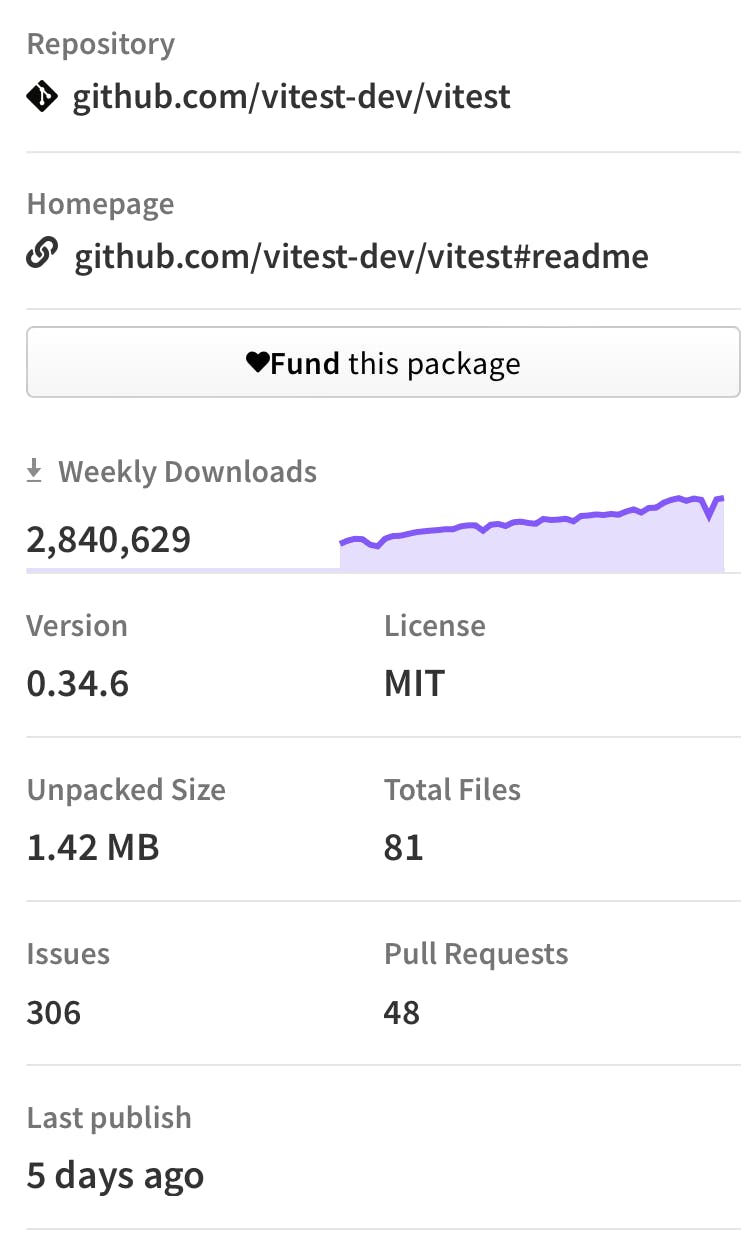Vitest vs. Jest: The New JavaScript Testing Framework
Explore the nuances of two JavaScript testing frameworks: Vitest and Jest
In the ever-evolving world of JavaScript development, choosing the right testing framework is crucial. Two notable contenders in this arena are Vitest and Jest. While Jest has been a long-standing favorite among developers, Vitest emerges as a compelling alternative, powered by the modern build tool, Vite. This article provides a thorough comparison of Vitest and Jest, examining their features, advantages, and limitations.
Vitest: The Newcomer Powered by Vite
Vitest is a testing framework designed to work seamlessly with Vite. It leverages Vite's capabilities, such as native ES module support and fast Hot Module Replacement, to offer a testing environment that aligns with modern JavaScript practices.
Key Features of Vitest:
Speed: Utilizes Vite's infrastructure for faster test execution.
ES Module Support: Native handling of ES modules.
TypeScript Integration: Seamless integration with TypeScript projects.
Built-In Utilities: Comes with built-in mocking and assertion libraries.
Familiar Syntax: Offers a Jest-like API for ease of transition.
Real-Time Feedback: Watch mode for instant test reruns on code changes.
Pros:
Performance: Faster test runs, especially beneficial for large test suites.
Modern Tooling: Aligns with the latest JavaScript features and practices.
Minimal Configuration: Simplified setup process.
Cons:
Community and Ecosystem: Smaller community and ecosystem compared to Jest.
Maturity: Being newer, it may lack some features found in more established frameworks.

Documentation and Resources:
Example Vitest Code Snippet:
// note the vitest import
// this is required by default but can be turned off with configs
import { describe, it, expect } from 'vitest';
describe('sample test', () => {
it('should return true', () => {
expect(true).toBe(true);
});
});
Jest: The Established Standard
Jest is a widely-used testing framework formerly developed by Facebook, known for its simplicity and comprehensive feature set.
Key Features of Jest:
Zero Configuration: Works out of the box for most JavaScript projects.
Mocking Capabilities: Extensive support for mocking functions and modules.
Snapshot Testing: Offers snapshot testing to capture component states.
Large Community: Backed by a large community and extensive documentation.
Pros:
Ecosystem and Support: A vast array of plugins and integrations.
Maturity: Well-established with a proven track record.
Documentation and Resources: Extensive resources for learning and troubleshooting.
Cons:
Performance: Can be slower, particularly with large test suites.
Modern JavaScript Support: Might require additional configuration for ES modules.
Not really too many cons. Jest is a very solid, robust option. It can be a little difficult to configure with Vite though.
Documentation and Resources:
Example Code Snippet:
// notice the simplicity and how it just works out of the box
import { sum } from './math';
test('adds 1 + 2 to equal 3', () => {
expect(sum(1, 2)).toBe(3);
});
Comparative Overview
| Feature | Vitest | Jest |
| Speed | Faster | Slower |
| ES Module Support | Native | Requires Configuration |
| Community | Growing | Established |
| Configuration | Minimal | Zero Config |
| TypeScript Support | Native | Good Support |
| Snapshot Testing | Supported | Supported |
Conclusion
The choice between Vitest and Jest depends largely on your project requirements and existing development stack. Vitest offers a modern and fast approach, making it an attractive option for projects using Vite or requiring native ES module support. Jest, with its maturity and extensive ecosystem, remains a reliable choice for a wide range of JavaScript projects.
As a software engineer, understanding the strengths and limitations of each framework is key to making an informed decision that aligns with your project's needs and goals. Both Vitest and Jest offer unique advantages, and the choice often boils down to specific project requirements and personal preferences.
For a deeper dive into each framework, refer to their respective documentation, which offers comprehensive guides and API references to assist in your decision-making process.
Side note: the cover art was created using DALL·E and wow. Personally, I am blown away at some of the artwork that generative AI can create.
